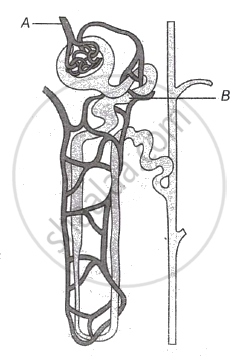Advertisements
Advertisements
प्रश्न
Answer the following question.
Amphibian tadpole can afford to be ammonotelic. Justify.
उत्तर
- Tadpole (larval stage of life cycle of amphibian) is aquatic. They are ammonotelic as they excrete nitrogenous waste in the form of ammonia.
- Ammonia is very toxic and requires large amount of water for its elimination.
- It is readily soluble in water and diffuses across the body surface and into the surrounding water.
- Also, the water lost during excretion can be made up through the surrounding water in ammonotelic organisms.
Hence, amphibian tadpole can afford to be ammonotelic.
APPEARS IN
संबंधित प्रश्न
Mention the exact location of the Prostate gland.
What does the bladder in our body do?
The excretory organs in an earthworm are:
(a) nephridia
(b) nephrons
(c) raphides
(d) ureters
The organs A of a person have been damaged completely due to which too much of a poisonous waste material B has started accumulating in his blood, making it dirty. In order to save this person's life, the blood from an artery in the person's arm is made to flow into long tubes made of substance E which are kept in coiled form in a tank containing solution F. This solution contains three materials G, H and I in similar proportions to those in normal blood. As the person's blood passes through long tubes of substance E, most of the wastes present in it go into solution. The clean blood is then put back into a vein in the arm of the person for circulation.
(a) What are organs A?
(b) Name the waste substance B.
(c) What are (i) E, and (ii) F?
(d) Name G, H and I.
(e) What is the process described above known as?
Write True (T) or False (F) for the following statement. Rewrite the false statement in the correct form.
Urine is devoid of blood cells.
Differentiate between:
Renal cortex and Renal medulla.
Explain the Term: Glomerulus
Complete the following sentence with appropriate word:
______ supplies blood to kidney.
Choose the Odd One Out:
Identify the correct labels for A and B in the following diagram

